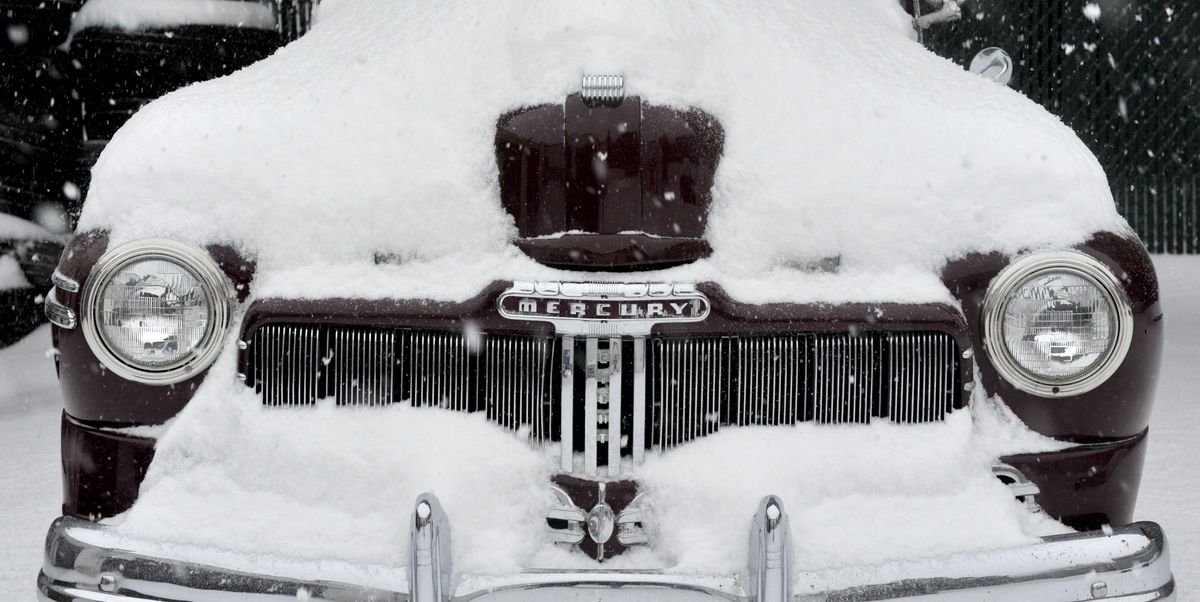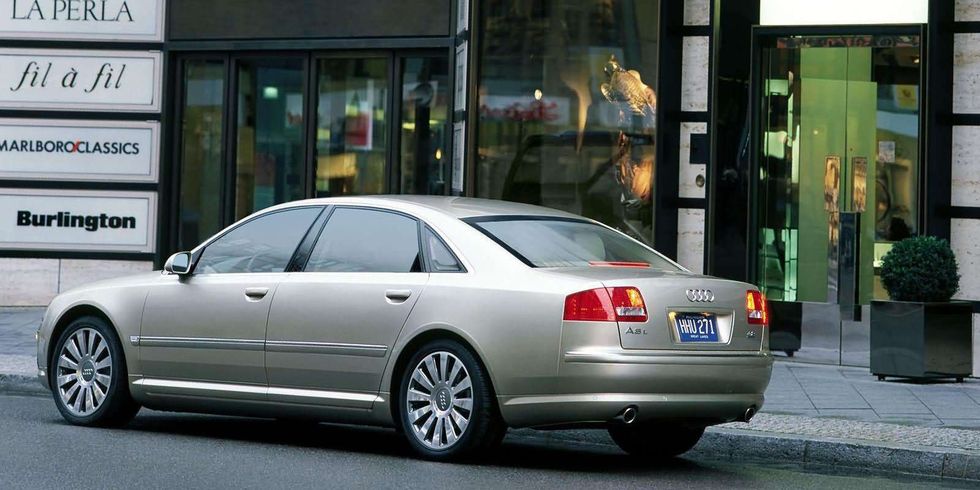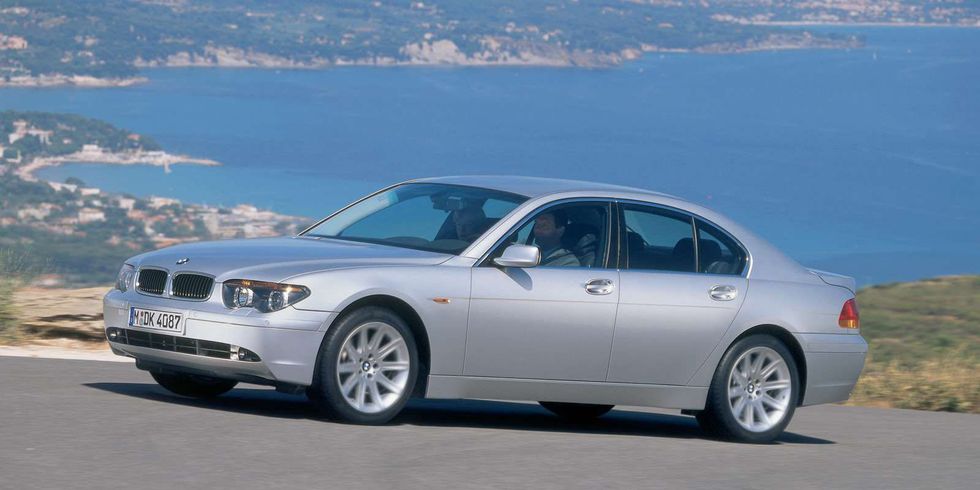Longtime readers of this small web column will remember that I have little patience for people who misuse the phrase “sports car.” For the record, the MGB is a sports car, as is the Boxster; The Mustang isn’t a sports car, the Aventador isn’t a sports car, and chopped-roof minibuses like the Macan and Audi SQ5 definitely aren’t even Close Because they are sports cars. You may not like it, but that’s the truth.
what about “Luxury car?” This is a little more difficult, isn’t it? Forty years ago, the definition of “luxury car” was clear and logical. A large car with extra options, a comfortable interior, a “high-end” nameplate, and plenty of chrome it was a luxury car. However, there were already cracks showing in the facade. Mercedes Benz The 240D wasn’t anyone’s idea of a “luxury car” in Germany – in fact, it was more like everyone’s idea of a taxi – but in the US it was a luxury car because it cost so much money. The Limited Buick Skylark has all the features of a luxury car except for the size; The Chevrolet Caprice Classic has all the features except for the nameplate; The Cadillac Calais has it all but the features.
The fact of the matter was that the definition of “luxury car” has always been, is and will be based solely on accessibility. Power windows are a luxury feature to even own a Civic; The “Twilight Sentinel” is such a luxury feature that even the Kia minivan offers as standard. The original Cadillac Seville was more of a luxury car than the Oldsmobile Ninety-Eight Regency because it cost more. Luxury is best understood as something that the common people cannot have.
This idea works well with luxury homes, luxury yachts, part-ownership of pizzerias, and many other items that will never fall through the massive ceiling of tacit prestige into the dirty hands of the proletariat. Yes it is no It works very well with luxury cars, because with the exception of extremely rare things like the McLaren F1, almost every car ever built ends up in the possession of someone much poorer and less pretentious than the original owner.
more than a few years ago, When BMW was on its way Rolls-Royce reinvented From a whole rag, a British automaker suggested that the best way to fix Spirit of Ecstasy’s slightly tattered stature was to buy every rusty, hanging Silver Shadow that crawls around the low-income regions of the world and send them a lot for crusher. He had a solid point. It’s hard to convince people to spend a quarter of a million dollars on your brand when there’s a disjointed example of said brand blocking traffic on the road outside London.
Note that the idea will be of little use if you implement it, for example, in pickup trucks. The sudden absence of every twenty-year-old F-150 in this country would engender distrust, not interest, on the part of potential F-Series buyers. Nor is the customer of the new Camry particularly upset by the fact that the local fast-food joint is stocked with old Toyotas in disreputable condition. It’s usually the base value for the F-Series or Camry no The impression of personal wealth and/or success you generate in your immediate neighbors.
I’d suggest that entry-level sports sedans, such as the BMW 3-Series and Lexus IS, are also mostly exempt from the association-shame phenomenon. Many owners of the new 340i and M4 sedans have whetted an appetite for earlier examples from the brand. There’s usually a fix-and-fix subculture that arises around cars like that. The same applies to Corvettes, Porsches, and other occasional use vehicles.
You only get to the heart of the problem when you think of cars like the BMW 7 Series, Audi A8, and post-W126 examples of so-called “big-body Benz”. Most command six-figure prices when new, but their resale value drops sharply once they leave the care and custody of their first owners. A full-size fifteen-year-old German sedan isn’t usually worth more than the compact sedan with which it shares a showroom; Five years later, either in the junkyard or staring desperately from a dimly lit sheol at the buy-here-pay-here lot.
The pilgrimage carried by the Seventh or S-Class ends at a series of more dignified stops. “Shameless Benz” from the British “Chaffes”. Monster wheels and aftermarket grilles are brushed. Frequent and unexpected breakdowns, a natural consequence of someone paying eight thousand dollars for a car full of individual components for eight thousand dollars. Sometimes there is a season at LeMons or ChumpCar, though I consider that to be a kind of redemption period in the individual history of a particular car.
Day and night, those old “big bodies” out there stir all the opposite of good intentions into the hearts of potential buyers of premium sedans. It’s not worth much to anyone, not even to their drivers. It’s a pointed, irrefutable callback to the tales of timeless quality and impeccable prestige that square-jawed salesmen weave into well-lit showrooms. No vintage Navigator has ever bothered a wedding guest the way the E38 Bimmer tail-drawer worms its way into the thoughts of the man who is on his way to paying three times the national average household income for that modern car’s successor.
This does not appear to be happening in Europe. Most luxury cars disappear in Africa or the Middle East, by buying or ordering at midnight, sometime before their 10th birthday, I’ve been told by people who should know. The streets of Addis Ababa may be littered with tired examples of the W220, but the average German executive needn’t devote any thought or time to this fact. Our Continental cousins also have stricter vehicle inspection regulations that would send half of America’s in-service personal vehicle fleet straight into the jaws of crusher. These factors combine to leave them blissfully ignorant of what happens to your favorite dog when he goes away to that special farm in the country.
The average prestige sedan in this country benefits from several thousand dollars in incentives and marketing support, much of it designed to overcome some of those lingering doubts caused by exposure to bad examples from previous models. Wouldn’t it be a good idea to set aside some of that money for a buyback program? It wouldn’t cost much to get every old big sedan off the road. I have some personal suggestions for vehicles to target aggressively: every W220 S430 out there, for example. But the exact mechanics of the program I leave to my financial and ethical chiefs in the marketing departments.
The disappearance of every dirty old 7 Series will drive up the value of the good stuff that’s left. This, in turn, will raise the value of underused examples, which will raise transaction prices for new models. It is not difficult to understand the process. It would give manufacturers in this country some market control that they so desperately desire but have been held back almost entirely by state-level laws regarding dealer concessions.
The first automaker to try this idea would benefit greatly from it. I expect they will want to compensate me. So I’m setting my own price here in public, because I don’t want any misunderstandings. I do not want the money. I don’t want a job. I just want a good condition Rolls-Royce Silver Shadow. Make it Brewster Green, with a chocolate brown color on the inside. I don’t care if people think I’m a chauffeur at the Peninsula Hotel. I don’t care about prestige, perceived or actual. I leave this kind of thing to the people who need it. I just want a nice luxury car – and I’ll define what that term means to my satisfaction.
Born in Brooklyn but exiled to Ohio, Jack Baruth won races on four different types of bikes and in seven different types of cars. Everything he writes should most likely come with a trigger warning. column, An unavoidable connectionis played twice a week on Road & Track.
Jack Barroth is a writer and competitor with podiums in more than fifteen different categories and penalties of motoring and cycling competitions, in both amateur and professional capacities, as well as a keen amateur musician and vocal enthusiast who owns hundreds of musical instruments and sound systems. His work has appeared in Bicycling, Cycle World, Road & Track, WIRED, Wheels Weekly, EVO Malaysia, Esquire and many other publications. Billy Gibbons, Sheryl Crow, and others were performed by his original guitar design, Melody Berner.



